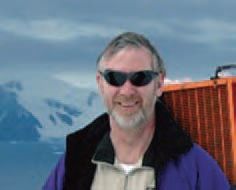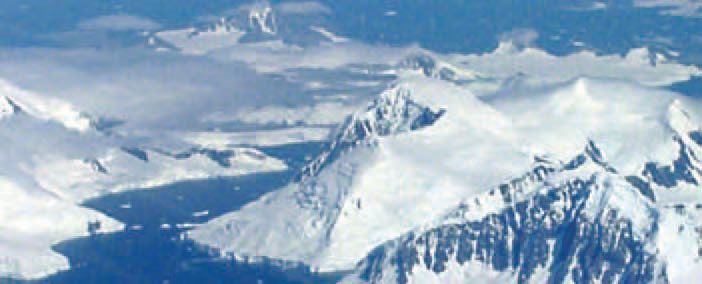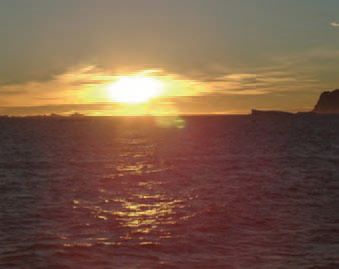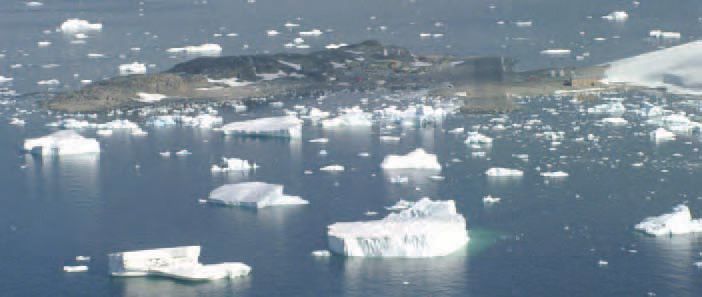
Physiology News Magazine
Physiology in the extreme
What drives perfectly sane physiologists to leave the comfort of their home labs to travel across the world to hostile environments in pursuit of their particular holy grail? By day Stuart Egginton is a Reader in Cardiovascular Physiology at the University of Birmingham, living the sort of academic existence that most of us would recognise. But from time to time he ups sticks and takes off for Antarctica. Thelma Lovick tries to find out why
Features
Physiology in the extreme
What drives perfectly sane physiologists to leave the comfort of their home labs to travel across the world to hostile environments in pursuit of their particular holy grail? By day Stuart Egginton is a Reader in Cardiovascular Physiology at the University of Birmingham, living the sort of academic existence that most of us would recognise. But from time to time he ups sticks and takes off for Antarctica. Thelma Lovick tries to find out why
Features
https://doi.org/10.36866/pn.60.12
Antarctica – where science is cool…

Thelma Lovick (TL) Why go all that way just to study the antics of some Antarctic fish?
Stuart Egginton (SE) You can do there what you can’t do here. We have access to animals that are not found anywhere else, because the Southern Ocean is bounded by the polar front which physically separates them from the rest of the planet. This is a unique situation in a marine environment. If you want to look at low temperature physiology, there are vertebrates in Antarctica that have the lowest core temperature of all – about -2oC during their active lifestyle.
But the real drive is that you have access to a genetically closely related group of animals in a stable environment. So any comparative study avoids the confounding variance of almost any other system. As a physiologist this allows me to specifically explore phenotypic plasticity. What we have there is the aquatic equivalent of Darwin’s finches at low temperature. In addition, as we have the detailed geological record, we know we’re looking at evolution in progress.
TL So does that put what you’re doing in the same league as Darwin?
SE Well of course I’d like to think so, but I’m more of a realist! Let’s just say, we are finding out things that are unique, which is really exciting.
TL What’s it like doing science in such an extreme environment?
SE Even the logistics of getting there and existing there can be quite challenging. You only have access to the research bases during the Austral summer, which is about 3-4 months long. This is when ships and aircraft can get access to the land avoiding the frozen sea. Even so there’s no guarantee of actually getting there. Out of six attempted trips, I failed twice to make it. Once the boat I was on got stuck in pack ice and the second time I was recalled for family reasons – very frustrating. The temperature varies from -10oC to about +2oC on a fine summer day. But, of course, the further south you get, the shorter the ‘night’, which in reality is only twilight. I rarely ever adjust to the light schedule and consequently tend to have very long days and end up sleep-deprived. Usually I get up early, make some breakfast in the galley and then head into the lab. There are set mealtimes for lunch and dinner with ‘smoko’ breaks in between. This routine is left over from the naval origins of the British Antarctic Survey. So basically we follow the same pattern that Scott did.

TL What are the worst bits about working in the freezing cold?
SE When you start doing surgery, your fingers are in sub- zero water, so manual dexterity becomes a challenge. There comes a point when your free nerve endings are screaming at you to get out of the cold. So you warm your hands under a hot air fan and almost immediately you regret it because you have micro-abrasions on your skin due to the fish’s teeth or spines. And as you warm up and salt water enters the cuts…these are the times when it doesn’t seem to be such a good idea to be there.
TL Do you ever find you’ve left that essential key bit of kit at home?
SE You have to develop the mentality to pack up a complete lab and take it all with you. Everything you take into the base you take out. And that includes all your bodily wastes. We can’t afford any pollution of the environment – this is not Everest! So usually I pack the resources to do probably three projects, on the assumption that at least one isn’t going to work. You can’t rely on any spare parts or any equipment being available. It can mean a lot of down time in the lab at home beforehand, because a lot of equipment has to be shipped south 3 months before you arrive on the base. When you get there, it really is a one man operation. And, of course, there’s no animal house. It certainly teaches you to be economical with numbers when you have to go out and catch your experimental animals first, especially on small boats in a 20ft swell and freezing spray!
TL How many people are on the base?
SE Usually 24 over the winter, but probably about 120 or so go through during the summer. So at any one time there are 60-80 people there. There are base support people who run the aircraft, boats, etc. and then the physical scientists who go out to do atmospherics or glacial work and the biologists who try and examine adaptations to probably the most extreme environment in the planet.
TL This sounds like a very intense environment where you are probably fairly short of personal space. What’s the social scene like down there? What do you do when you’re not working?
SE The maritime environment gives you wind, sleet, grey skies – in fact miserable conditions for 80% of the time. When you’re walking across to main base for your meal and you can hardly see 10ft in front of you, the words of Scott come to mind: ‘Great God, this is an awful place’.
When the sun shines, though, it is pure magic. You have options of skiing, snowboarding on the glacier, walking around the shoreline taking photos of wildlife and, if you are very fortunate, you get to act as co-pilot on one of the Twin Otters that fly out to supply the field operations, or to go on the small boats to support the diving or sample collection.
You have to constantly concentrate on the environment, though, and not get lulled into a false sense of security. The conditions can change frighteningly fast. Memorial plaques to many who have lost their lives in the pursuit of science down there are a harsh reminder of the unforgiving nature of an environment where your first mistake may be your last. In fact, all visitors now have to undergo training to make sure you could survive should disaster strike, as it did 3 years ago when the Bonner lab burnt down. There are primitive huts dotted around and these can actually provide a welcome refuge for a day or so to let you get your head back together if cabin fever strikes!
TL Do you really manage to leave behind all the day-to-day irritations that, increasingly, come with the territory of being a university academic?
SE When I first went down we had an allocation of 200 words per month by telex. This mode of communication was difficult for personal contact, especially with a wife and 9 month old baby, as he then was. Despite that, and being 8,500 miles away from my notes, I still got a telex demanding exam questions! Now we have email, and I have to say that the delete button gets a lot of use. Just this year, we got a high-bandwidth satellite link, so we now have web access and telephone access, when atmospheric conditions permit.
There’s also lot of interest shown by the public in what goes on at the base so quite a lot of time is spent answering requests for interviews from TV, radio and print media. Our current project made it on to the BBC and Sky news recently. The public like the idea of remote science. It’s a photogenic environment, you can link it with global warming, and there is a tenuous link with medical advances in fields like hypothermia and the use of cryprotection in transplanting organs.

TL Finally, is all this trouble really worth it?
SE Absolutely! When it works, like everything else, it’s brilliant.

The science…
SE I first started looking at cardiovascular control in notothenioids when it became clear they had a nonadrenergic mediated stress response, which is probably unique among vertebrates. After much arguing with unbelieving reviewers, we showed that this was due to impaired release and downregulated synthesis of catecholamines. The cardiovascular system is dominated mainly by cholinergic control, along with serotonergic vasoconstriction in branchial vessels. We’ve utilised pharmacological blockade, bilateral cardiac vagotomy, and heart rate loggers to examine the plasticity of vagal control in the lab and also in free ranging animals. Using the natural myoglobin ‘knockout’ seen in icefish we characterised how oxygen transfer was accommodated without facilitated diffusion (cardiomegaly, low resistance circulation, huge mitochondrial volume density). Recently we’ve been tackling cardiorespiratory coupling, and whether it is possible to detect the equivalent of sinus arrythmia when heart rate and ventilation frequency are similar.
